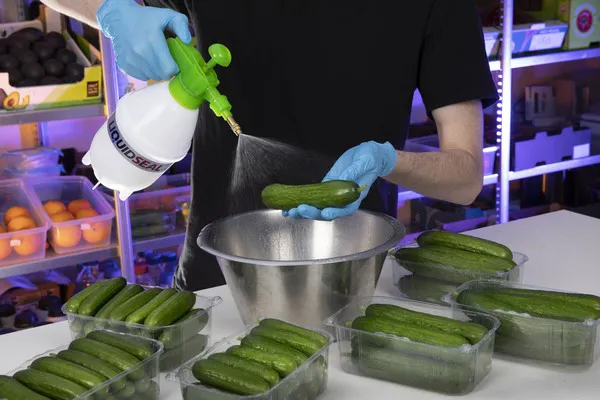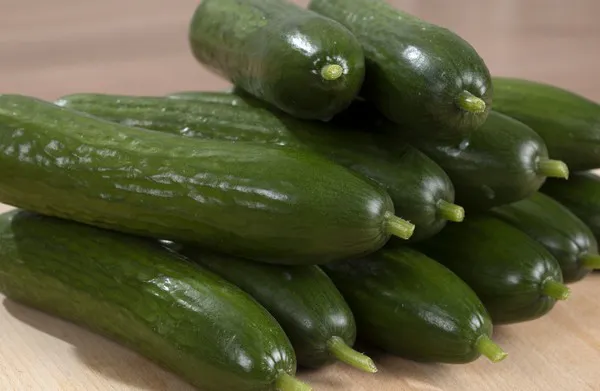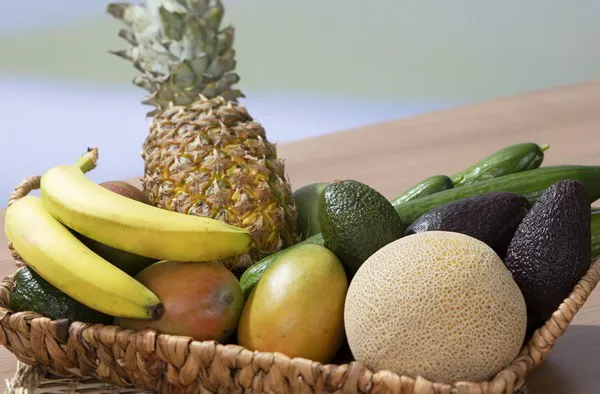It was an interesting development related to the pandemic.
“There was a big demand for sustainable packaging or no packaging at all before the pandemic,” says Heleen van Rijn-Wassenaar, marketing specialist cucumber at Rijk Zwaan based in the Netherlands. “Then the pandemic came, and people wanted plastics around everything again because they were afraid of having their products touched. But now, the tendency has gone back to using less plastic again. There is an evident interest in this.”
 Liquidseal is an edible, post-harvest coating used here on snacking cucumbers.
Liquidseal is an edible, post-harvest coating used here on snacking cucumbers.
And that return, or possibly even greater interest, in plastic-free options for produce items, shines a light on a new partnership that Rijk Zwaan has formed with the Dutch company Liquidseal to apply its edible, post-harvest coating on their snacking cucumbers. “We started researching this on the request of retailers who, together with growers and consumers, all wanted to have other solutions for going plastic-free,” says van Rijn-Wassenaar.
Smaller cucumber, different needs
But more specifically, Rijk Zwaan wanted to have a plastic-free option for its smaller, snacking cucumbers. And that item would be a bit different than coating a longer (English) cucumber. “Snacking cucumbers have a big surface compared to the inner parts and easily dehydrate. We knew Liquidseal had a solution for long cucumbers, so we approached them to see if they had a solution for these,” says van Rijn-Wassenaar. The state of the supply chain also factored into this request, given delays in shipping of mini cucumbers increased the possibility of dehydrating the product.
As Ernst van den Berg, international sales manager at Liquidseal, points out, different sizes and varieties of cucumbers have their own metabolism. “That’s why we have to optimize the coating for different items. With cucumbers, we have a different coating for smaller cucumbers than the one we use for longer cucumbers,” he says, noting Liquidseal’s research and development department continues to improve the coatings that have been formulated.
 Rijk Zwaan wanted to have a plastic-free option for its smaller, snacking cucumbers.
Rijk Zwaan wanted to have a plastic-free option for its smaller, snacking cucumbers.
For now, the product is available in the U.S. and Mexico, particularly on cucumbers. The product is also available on hard-skinned fruits in almost every country around the world. But hopefully, the product will also be available in other markets soon. “At this moment, it’s not allowed to put any kind of coating on the cucumber in the EU. But there’s also great interest from retailers to achieve their Green Deal goals, so there is a push to change this legislation,” van den Berg says.
At the same time, governments are also pressured to reduce their plastic usage. “In France, since January of this year, it’s not allowed to have any plastic around vegetables anymore in the supermarket with the exception of leafy greens. Spain will follow next year,” says van Rijn-Wassenaar. “So there’s demand from retailers and consumers. But governments also have their own sustainability goals to meet.”
Applying it to other items
Longer term, there’s also an interest in applying this kind of coating to other products. “The coatings are based on platform technology so that they can adapt it to other commodities. We’re getting requests from the market to look at bell pepper and tomato mostly,” van den Berg says. But like the adaptation of coatings for longer cucumbers to snacking ones, the challenge will be adapting to the completely different metabolism that bell peppers have, plus factoring in moisture levels, the gas exchange, and more. Also down the road is the idea of looking at softer, edible-skinned fruits such as stone fruit, should the legislation allow for that.
 For now, the product is available in the U.S. and Mexico on cucumbers particularly. The product is available on hard-skinned fruits in almost every country around the world.
For now, the product is available in the U.S. and Mexico on cucumbers particularly. The product is available on hard-skinned fruits in almost every country around the world.
Whatever produce items and varieties lie ahead, what Rijk Zwaan continues to do is focus on breeding for varieties with a good shelf life. New breeding material not reaching a set value of shelf life will never be introduced commercially.
“But we have to keep in mind that shelf life is always limited. Shelf life depends on a broad range of factors, such as the type of fruit we have but also the way we store the product,” adds van Rijn-Wassenaar. “We see a lot of fluctuations in humidity and temperature which have a negative effect on shelf life and the storage of product in supermarkets can be improved. Most of the time, in supermarkets, there’s not an ideal shelf for items such as tomatoes, cucumbers, bell peppers, eggplants, and more. It’s just an open shelf where it’s the temperature of the supermarket. Or it is stored too cold, causing chilling injury. The ideal storage temperature between 10-14 degrees is rarely available. That’s why we reached out to Liquidseal. We needed solutions with the disappearance of plastics.”
 For more information:
For more information:
Heleen van Rijn-Wassenaar
Rijk Zwaan
h.van.rijn-wassenaar@rijkzwaan.nl
https://www.rijkzwaanusa.com/
Ernst van den Berg Liquidseal
Liquidseal
evandenberg@liquidseal.nl
https://www.liquidseal.nl/en/
